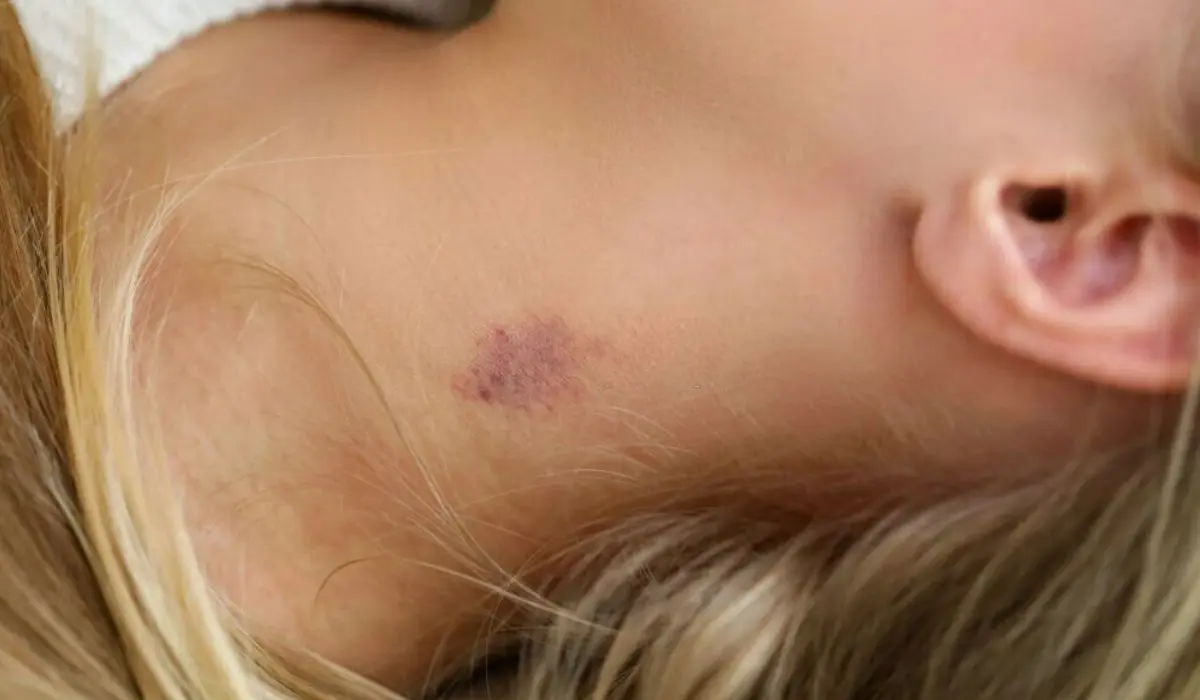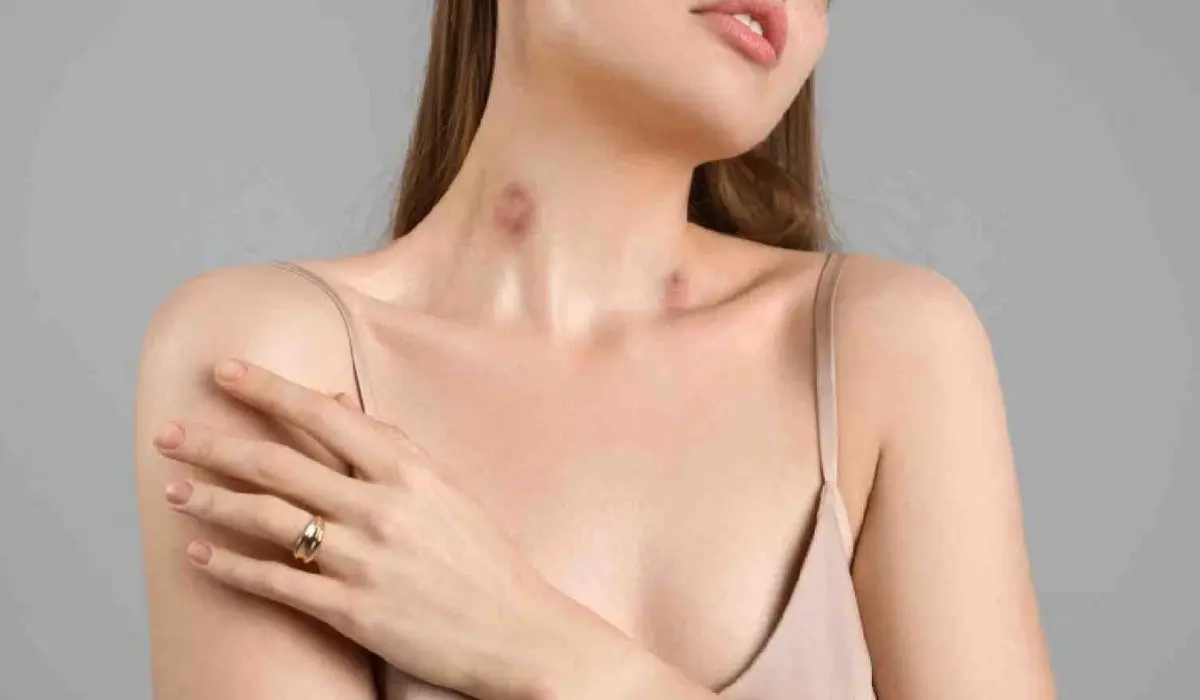Hickeys or love bites are essentially bruises caused by suction or aggressive kissing, which can rupture the blood vessels under the skin. They are generally not dangerous and are not associated with any health risks. However, they can embarrassing or socially awkward for individuals in certain personal and professional contexts. This is why most people want to get rid of them as soon as possible.
How Is Hickey Formed?
A hickey is formed as the result of pressure applied through the skin, which ruptures the blood vessels. This could be kissing or sucking during the moments of passion. When the capillaries break, it leaks blood to its surroundings, and most importantly, the tissue. The leaked blood then creates a bruise-like pattern on the skin.
Though it may appear red or purple initially, the color could get darker. After a week or two the body can reabsorb the trapped blood and the hickey changes its color into green or yellow. Eventually, it would disappear as the healing process progresses.

How To Remove A Hickey? Essential Ways
Though generally painless, some people might feel soreness when touched on the affected area. This also depends on the size of the hickey. Hickeys, albeit rarely could be infected and cause redness, swelling, warm, or even ooze pus.
In scenarios like those, you should always keep the wound clean. Even if it doesn’t hurt, people don’t want other people judging them as hickeys are generally given on the visible area of the neck. So you could use the following ways to remove it-
1. Cold compress– Apply cold compress to the hickey as soon as it forms. This can help reduce the swelling and even minimize its appearance. To do this, you could take a clean cloth, wrap ice in it, and apply it 10-20 minutes for every hour.
2. Warm compress(after 48 hours)-After the initially cold compress, you can now warm compress it to increase the blood flow to the area. This can help in the rapid reabsorbing of the blood settled near the tissues.
3. Arnica cream or gel– Arnica is a natural remedy known for its anti-inflammatory properties. You could apply it on the affected area, a few times a day to reduce the bruising and swelling.
4. Aloe Vera– Aloe Vera is full of calming properties and applying some to the area would only be beneficial for the skin.
5. Vitamin K cream– These are available at the store. This is what heals or wounds faster so to make the hickey disappear, you may want to apply some regularly ever since you get one. Vitamin K creams are available in every drugstore.
6. Concealers– Most people use this sure shot technique to make it disappear overnight. Concealers cannot heal the wound or reduce the inflammation but applying a green color corrector on the red bruise, putting on your regular concealer, and then foundation could remove any signs of a hickey from your body. However, if the skin is broken, make sure to cover the wound with a skin-colored bandage before applying makeup. This can prevent the wound from getting contaminated.
7. Clothing– If healing isn’t working fast enough for you, you can maybe use your sense of style to keep it hidden. If it is on the arms or hands, opt for long-sleeved outfits with opaque clothing, If it’s on your neck, you may want to go for high-neck outfits. You can also use scarves or collared shirts to keep it in the dark until it heals completely. However, the clothing choice should be made in tandem with your whole look, otherwise, it might stick out like a sore thumb.
8. Give it time– Time heals and that is true for physical wounds as well. Give it ample time to heal and it will go away on its own. It might take longer than a week for it to completely go away.
Related:- How To Remove Acrylic Nails? Things To Keep In Mind After Acrylic Removal
Conclusion
You must keep in mind that results among individuals could vary. Some might find these tips useful, but others unfortunately have to opt for scarves or makeup to make it fade away. In any case, you should take care of the wound if it takes longer to heal or starts getting redder as days pass by.

